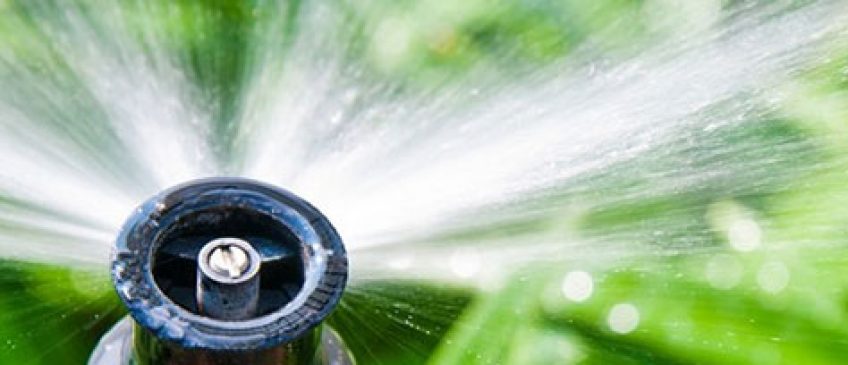The spring season is essentially New Year’s for your lawn. The emergence of warmer temperatures, occasional rainfall and all the sunshine you can handle signal a new opportunity to have your lawn be the envy of all your neighbors. However, having lawn characteristics such as emerald green grass, blooming flowers and no weeds in sight doesn’t happen through Mother Nature alone. It takes ample prepping time as well as putting in a little effort once the weather permits it. Here’s a few tips to help improve your lawn for springtime, and start becoming the talk of the neighborhood:
Aeration
One of the primary reasons your lawn isn’t looking up to par is how healthy your soil is below the grass. For starters, you need to ensure that your soil is getting the necessary air passages it needs for consuming all the water, air and nutrients it needs to thrive. If you’ve noticed in the past that your lawn tends to sprout up dry patches throughout the grass, then perhaps it’s time to try enhancing aeration in your lawn. Aeration is the act of piercing tiny holes in the lawn to help boost the soil’s ability to swallow up water, air and nutrients. There are a few ways to help with this process: First, you can try walking on your lawn while wearing aeration sandals, which have tiny spikes on the bottom to help loosen up the soil. You can also try manually or electronically powered appliances that also work to gently puncture the surface so more natural elements can be consumed in your lawn.
Water the right way
Sure, water is the essential element for any healthy lawn. But sometimes it’s easy to go overboard with just how much water your yard actually needs. According to the DIY Network, the average lawn will need anywhere between 1 to 1.5 inches of water every week to sustain its rich color and quality. If you live in a climate that’s dry, then irrigating your lawn with a hose two to three times a week can do the trick. Otherwise, if your spring season typically includes rain a few times a week, then that should be enough to do the trick. You want to avoid over-watering your lawn because pouring excess water into the soil is what drowns the roots of the plants. If your yard consists mostly of shallow-rooted plants, then over-watering is one of the worst things you can do, as its roots can become easily stressed due to excessive irrigation.
Remove thatch
Another common indicator of a below-average lawn is experiencing excessive areas of thatch. Thatch is layers of dead grass and roots that tangle together along the ground surface. When there is an abundance of thatch, the soil and roots below it are often blocked from the air, water and nutrients they need to flourish. Raking your lawn is a quick and easy way to get rid of excess thatch, and there are also a variety of hand-powered tools that are designed to pick up and throw out these useless patches of dead plants. It’s a general rule of thumb to de-thatch your lawn if there is at least half an inch of thatch present on top of the surface. If less is present, walking over the lawn with aeration boots is usually enough to make sure the soil below it is getting the air and water it needs.
“The three essential nutrients in fertilizer are nitrogen, phosphorus and potassium.”
Fertilize
Of course, the easiest way to enhance your lawn’s looks is by applying the right amounts and types of fertilizer to your lawn. Most fertilizers are comprised of three nutrients: nitrogen, phosphorus and potassium. Nitrogen is what helps the grass get its vibrant green color, and also stimulates root growth. Phosphorous is the essential nutrient for enhancing the health of a plant’s roots, whereas potassium works to improve grass health, warding off diseases brought on by droughts or temperature changes. Many fertilizer packages come with a label that indicates how much it has of each nutrient, so you can pick one depending on which specific area of lawn care you need.
The essential fertilizer groups available are organic, water-soluble and granular. For a thicker and more natural-looking lawn, organic fertilizer helps stimulate nutrient absorption within the soil. Granular fertilizers are typically for more lawn care experts, as they tend to come in time-release formulas that give homeowners more control over the feeding of their lawn. Finally, water-soluble fertilizer is designed to help lawns that generally have trouble absorbing the proper amounts of water they need. If your lawn is looking far from spectacular as the spring settles in, start off the season by fertilizing the lawn, then adding another round of fertilizer at the beginning of summer and fall. Following these steps will improve your lawn in no time.


